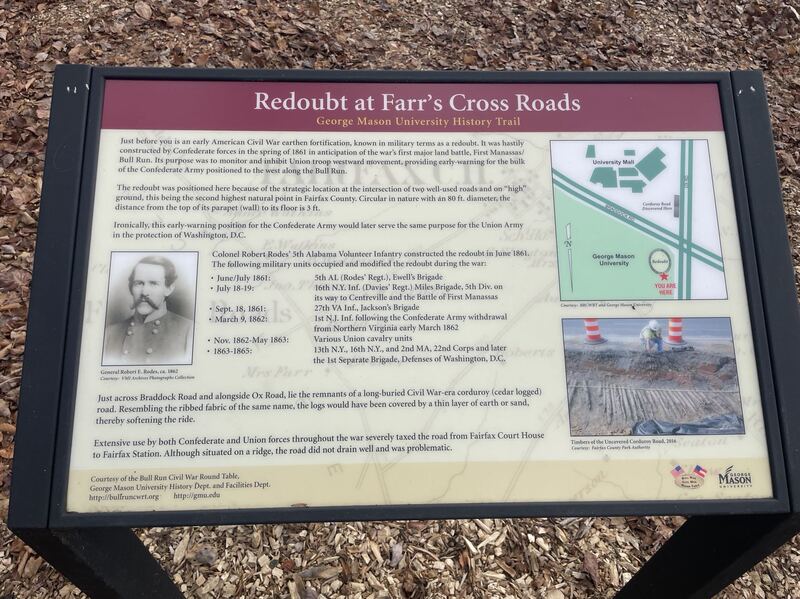Redoubt at Farr's Cross Roads History Marker
Just before you is an early American Civil War earthen fortification, known in military terms as a redoubt. It was hastily constructed by Confederate forces in the spring of 1861 in anticipation of the war's first major land battle, First Manassas/ Bull Run. Its purpose was to monitor and inhibit Union troop westward movement, providing early-warning for the bulk of the Confederate Army positioned to the west along the Bull Run.
The redoubt was positioned here because of the strategic location at the intersection of two well-used roads and on "high" ground, this being the second highest natural point in Fairfax County. Circular in nature with an 80 ft. diameter, the distance from the top of its parapet (wall) to its floor is 3 ft.
Ironically, this early-warning position for the Confederate Army would later serve the same purpose for the Union Army in the protection of Washington, D.C.
Colonel Robert Rodes' 5th Alabama Volunteer Infantry constructed the redoubt in June 1861.
The following military units occupied and modified the redoubt during the war:
• June/July 1861: 5th AL (Rodes' Regt.), Ewell's Brigade
• July 18-19: 16th N.Y. Inf. (Davies' Regt.) Miles Brigade, 5th Div. on its way to Centreville and the Battle of First Manassas
• Sept. 18, 1861: 27th VA Inf., Jackson's Brigade
• March 9, 1862: 1st N.J. Inf. following the Confederate Army withdrawal from Northern Virginia early March 1862
• Nov. 1862-May 1863: Various Union cavalry units
• 1863-1865: 13th N.Y., 16th N.Y., and 2nd MA, 22nd Corps and later the 1st Separate Brigade, Defenses of Washington, D.C.
Just across Braddock Road and alongside Ox Road, lie the remnants of a long buried Civil War-era corduroy (cedar logged) road. Resembling the ribbed fabric of the same name, the logs would have been covered by a thin layer of earth or sand, thereby softening the ride.
Extensive use by both Confederate and Union forces throughout the war severely taxed the road from Fairfax Court House to Fairfax Station. Although situated on a ridge, the road did not drain well and was problematic.
